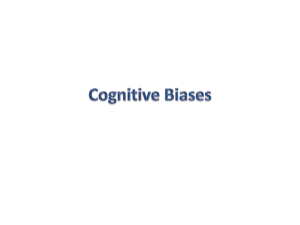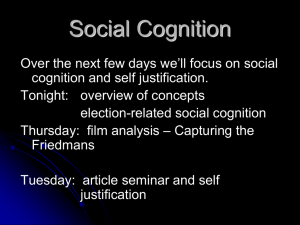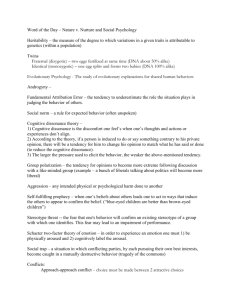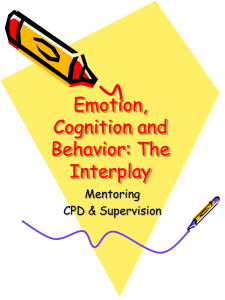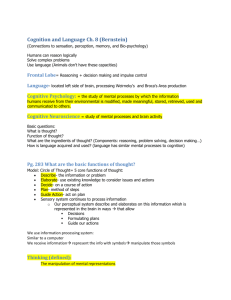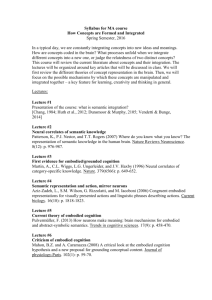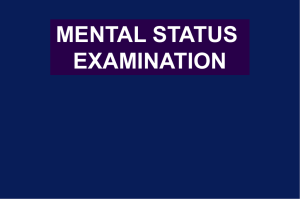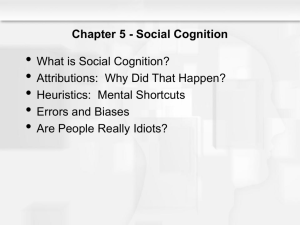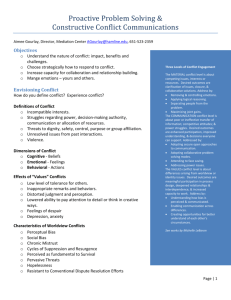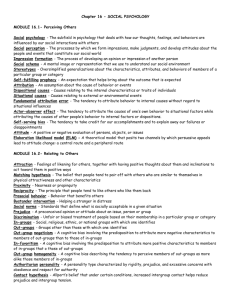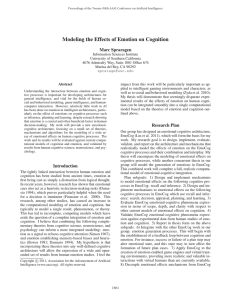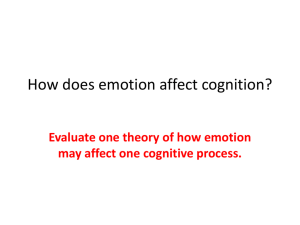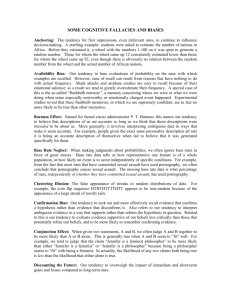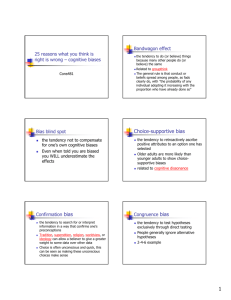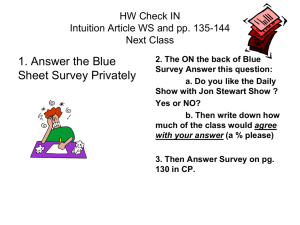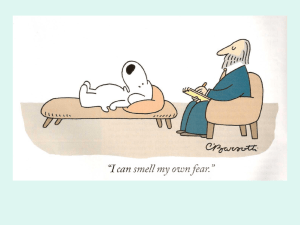COGNITION
advertisement
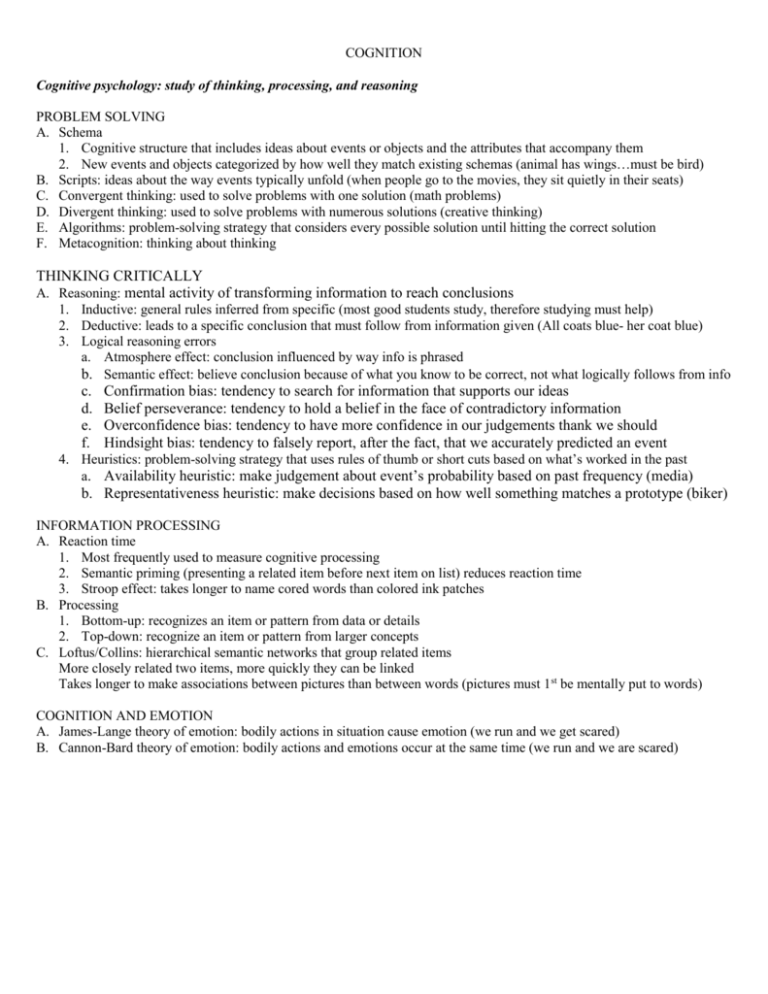
COGNITION Cognitive psychology: study of thinking, processing, and reasoning PROBLEM SOLVING A. Schema 1. Cognitive structure that includes ideas about events or objects and the attributes that accompany them 2. New events and objects categorized by how well they match existing schemas (animal has wings…must be bird) B. Scripts: ideas about the way events typically unfold (when people go to the movies, they sit quietly in their seats) C. Convergent thinking: used to solve problems with one solution (math problems) D. Divergent thinking: used to solve problems with numerous solutions (creative thinking) E. Algorithms: problem-solving strategy that considers every possible solution until hitting the correct solution F. Metacognition: thinking about thinking THINKING CRITICALLY A. Reasoning: mental activity of transforming information to reach conclusions 1. Inductive: general rules inferred from specific (most good students study, therefore studying must help) 2. Deductive: leads to a specific conclusion that must follow from information given (All coats blue- her coat blue) 3. Logical reasoning errors a. Atmosphere effect: conclusion influenced by way info is phrased b. Semantic effect: believe conclusion because of what you know to be correct, not what logically follows from info c. d. e. f. Confirmation bias: tendency to search for information that supports our ideas Belief perseverance: tendency to hold a belief in the face of contradictory information Overconfidence bias: tendency to have more confidence in our judgements thank we should Hindsight bias: tendency to falsely report, after the fact, that we accurately predicted an event 4. Heuristics: problem-solving strategy that uses rules of thumb or short cuts based on what’s worked in the past a. Availability heuristic: make judgement about event’s probability based on past frequency (media) b. Representativeness heuristic: make decisions based on how well something matches a prototype (biker) INFORMATION PROCESSING A. Reaction time 1. Most frequently used to measure cognitive processing 2. Semantic priming (presenting a related item before next item on list) reduces reaction time 3. Stroop effect: takes longer to name cored words than colored ink patches B. Processing 1. Bottom-up: recognizes an item or pattern from data or details 2. Top-down: recognize an item or pattern from larger concepts C. Loftus/Collins: hierarchical semantic networks that group related items More closely related two items, more quickly they can be linked Takes longer to make associations between pictures than between words (pictures must 1st be mentally put to words) COGNITION AND EMOTION A. James-Lange theory of emotion: bodily actions in situation cause emotion (we run and we get scared) B. Cannon-Bard theory of emotion: bodily actions and emotions occur at the same time (we run and we are scared)
